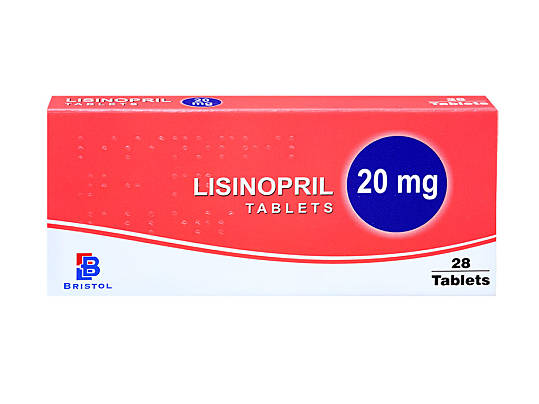Normal Blood Pressure

Medically reviewed by
Dr Kathryn BasfordLast reviewed: 28 Feb 2019
Ideal blood pressure levels

Key takeaways
Many experts believe that 115/75mm Hg (115 over 75) is an ideal blood pressure
Lower than 90/60mmHg is considered low blood pressure
Higher than 140/90mmHg is considered high blood pressure
If you suffer from hypertension, and are already stabilised on treatment you can order your treatment online from our clinic by taking an online assessment
Traditionally, an ideal blood pressure is considered to be around 120/80mmHg (read 120 over 80), but many experts believe that 115/75mmHg (115 over 75) is preferable.
Healthy people who exercise regularly, don’t smoke and have a balanced diet tend to have a slightly lower blood pressure than was previously thought to be normal (120/80mmHg).
If you suffer from hypertension, you can order your treatment online from our clinic by taking an online assessment. Our doctors will then review the consultation, prescribe and dispatch treatment within a few hours, on working days, via our partner pharmacy. We can only provide repeat prescriptions for patients who have been taking the same medication for a minimum of three months.
What is normal blood pressure?
The first number (e.g. 120) is the systolic pressure that represents the pressure in your blood vessels (arteries, veins) when the heart contracts and pumps your blood. The second number (e.g. 80) is the diastolic pressure that represents the pressure in your blood vessels between beats when the heart is at rest.
Guidelines concerning blood pressure have changed in recent years. 120/80mmHg (120 over 80) used to be considered normal. However, most doctors have now lowered the threshold to 115/75mmHg.
If your blood pressure increases to 135/85mmHg, this roughly doubles your risk of having a heart attack. A blood pressure of 155/95mmHg doubles this risk again (i.e. a risk 4 times higher than 115/75mmHg) and so on.
This is a new scale according to which every 20 point increase in systolic pressure (number on the left) and every 10 point increase in diastolic pressure (number on the right) doubles the chances of having a heart attack or stroke in people aged over 40.
Ideally, you should maintain a blood pressure between 90/60mmHg and 120/80mmHg. Blood pressure below 90/60mmHg is considered low blood pressure, which is fine so long as you don’t suffer from any symptoms (fainting, dizziness, dehydration).

No results found.
Please check your spelling or try another treatment name.
Measuring blood pressure - Guidelines
Here’s how to interpret your blood pressure readings:
- Lower than 90/60mmHg is considered low blood pressure
- 120/80mmHg is (still) considered normal blood pressure
- Higher than 140/90mmHg is considered high blood pressure
Then:
- Between 140/90 – 160/100mmHg is stage 1 hypertension (i.e. high blood pressure)
- Above 160/100mmHg is stage 2 hypertension
- Above 180/110mmHg is severe or stage 3 hypertension
This means that if your blood pressure is somewhere between 120/80 and 140/90 it is still normal - although more and more doctors consider this the stage of pre-hypertension.
Keep in mind that pre-hypertension tends to get worse if you don't make the right lifestyle choices. It is a warning that you need to change your lifestyle (e.g. exercise more, eat a healthier diet) before it's too late. The closer you get to 120/80mmHg, or slightly below, the more you are likely you are to enjoy an ideal blood pressure.
Normal blood pressure means that the pressure is high enough for the blood to bring oxygen and nutrients to all the cells in the body without putting a strain on blood vessel walls. High (blood) pressure for instance damages these walls over time and leads to serious conditions from heart attack and stroke to erectile dysfunction.
Hypertension and other conditions
While most people are considered healthy when their blood pressure is below 140/90mmHg (140 over 90), it is recommended that you bring your blood pressure below 130/80mmHg if you suffer from a cardiovascular disease, kidney disease or diabetes.
If your blood pressure is between 140/90mmHg and 160/100mmHg, you have hypertension stage 1. If your blood pressure is above 160/100mmHg, then you have more severe hypertension and you are much more at risk of cardiovascular disease, heart failure, stroke and kidney disease.
Are you at risk?
Doctors generally assess your risk factors (age, sex, ethnic background, cholesterol, lifestyle, blood pressure) in order to determine your risk of developing high blood pressure.
All these factors will result in a 10-point score that determines your risk of getting a cardiovascular disease in the next ten years. Obtain two points or less on this score and your GP will recommend you to start a treatment along with radical lifestyle changes – as prescribed by the most recent UK guidelines.
Measuring your blood pressure is quick and easy. However, since your blood pressure varies constantly depending on many factors (e.g. stress, anxiety), taking your blood pressure only once isn’t enough to determine whether you have high blood pressure.
If you've had a quite high blood pressure reading once, your doctor will need to perform more tests to confirm that you indeed suffer from hypertension (or not). Your doctor will then need an observation period during which he or she will take your blood pressure several times, when you are relaxed.
The observation period itself depends on your blood pressure readings as well as your risk factors (e.g. how many of them are combined in your case).
Regular check-ups
If your doctor has confirmed that you have hypertension, then you will have to go for routine tests every now and then. This will involve checking your urine, blood and heart beat (via the ECG – electrocardiogram) to make sure that everything is working fine, from your kidneys to your cholesterol and sugar levels.
The idea behind these tests is to understand the causes of hypertension in your specific case and see how it will affect your heart, blood vessels or other organs. This will help find the best treatment for high blood pressure for you.
Naturally maintaining blood pressure
So, how does your body control blood pressure?
Blood pressure is controlled by a variety of mechanisms. Your body can regulate the amount of blood pumped by the heart, the amount of blood in the arteries (via expanding and narrowing mechanisms) and the amount of blood in the veins (which also expand and narrow, thus sending less blood to the heart).
The amount of blood is controlled by the kidneys by adjusting the amount of urine which is produced. If more urine is produced, the amount of blood is reduced, which causes a decrease in blood pressure. On the other hand, if less blood is sent to the kidneys the amount of blood increases (as more water is retained in the body), and blood pressure increases. That's why kidney disease can cause hypertension and affect people who would otherwise have a normal blood pressure.
If you are diagnosed with high blood pressure, it is very important that you regularly attend check-ups and treat your condition with the appropriate medication and lifestyle changes.

Dr Kathryn Basford is a qualified GP who works as a GP in London, as well as with ZAVA. She graduated from the University of Manchester and completed her GP training through Whipps Cross Hospital in London.
Meet our doctorsLast reviewed: 28 Feb 2019
-
Low blood pressure (hypotension), National Health Service [accessed February 2023]
-
Low blood pressure, British Heart Foundation [accessed February 2023]
-
Blood pressure test, National Health Service [accessed February 2023]
-
Hypertension, WHO [accessed February 2023]
In order to avoid related health risks, your blood pressure needs to be kept within the normal range. Because of this, you shouldn’t miss doses of your blood pressure treatment if possible. You reorder your treatment quickly and conveniently from ZAVA, to avoid running out.












